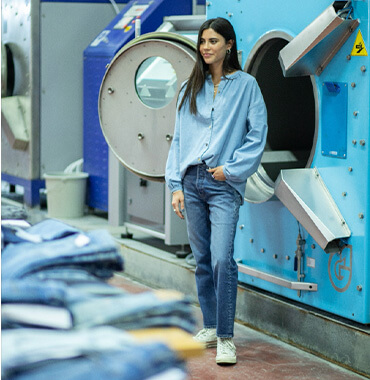Are You An Overpacker? Our Industry Sure Is.
Are you an over-packer? I don’t know about you, but I definitely used to be. But, as I became more aware that how much I packed impacted the number of emissions a flight had, it made me start thinking of narrowing it down to the essentials.
Are you an over-packer? I don’t know about you, but I definitely used to be. But, as I became more aware that how much I packed impacted the number of emissions a flight had, it made me start thinking of narrowing it down to the essentials. The same goes for packaging in our industry. While packaging is an essential component in protecting clothing during transportation, it comes with its severe impacts. We need to pair our packaging down to the essentials only. However, compostable packaging, “circular” bags and reusable packaging startups are working to change our reliance on plastic and the way packaging is used and reused. In the US alone, 380 billion plastic bags and wraps are used each year, according to the Environmental Protection Agency. Ellen MacArthur Foundation also says that plastic packaging is estimated to make up 26% of the total volume of plastics created a year, 72% of which is thrown away. Now this isn’t only from fashion purchases, but we heavily rely on plastic bags and mailers in every step of our supply chain. According to Fashion for Good, garment supply chains deploy an estimated 180 billion virgin polybags every year. This is a number we must reduce. Throughout sampling and warehousing, garments are usually enveloped in plastic, but questioning every piece of packaging to see if it is absolutely necessary is the first step. Do we need so much packaging to protect samples that will not be sold? Are we using the right size containers for warehousing to not create more emissions than we need? Can we consolidate any of these shipments? Then there’s the last mile. In a 2017 survey from Packaging Digest and the Sustainable Packaging Coalition, the top questions brands were asked were, “Why isn’t your packaging sustainable?” and “Why do you have so much packaging?” Question B comes back to pairing down to the essentials, but Question A poses many opportunities to optimize packaging that will reach our end consumer. So what are some of the alternatives?
Compostable Alternatives
TIPA® was founded on the principle that packaging should be inspired by nature’s packaging, like the peel on a banana or an apple's skin. So they developed an alternative to plastic that decomposes back into the soil with no toxic residue, microplastics, or other pollutants. TIPA bags have also been “backyard compostable” certified, meaning if you buried the bags in your backyard, the bag would completely disappear in less than 180 days. But be wary that some options labelled compostable need very specific environments to decompose. So be sure to read the instructions on how to dispose of these properly.
Reusable / Circular Alternatives
RePack has gained some serious traction to curb single-use plastics while allowing brands to engage and educate consumers on circular initiatives. This is one of the most important features of this service as consumers are an integral part of the equation. RePack has three adjustable sizes that are designed to last at least 20 cycles of shipments. To make the process as seamless as possible, customers can easily return the packaging for free by post, with some brands offering an incentive to do so with a coupon for their next purchase! One thing to note here is that these reusable bags are plastic. However, RePack notes that the amount of packaging saved from the landfill through reuse is significant. Another option is to send consumer goods in beautifully branded reusable packaging such as cloth zip bags or wrappings. This allows your end consumer to do what they please with it, and hopefully, that doesn’t mean throwing it right in the trash but using it to store whatever goods they choose. The brand LANIUS gives its shoppers a unique option to select an already used carton as their order's shipping method. This is an option I would love to see more. While searching for more eco-friendly packaging options, the single most important thing is reducing the amount of packaging we use. It is great to see the effort that brands are making to use compostable and reusable packaging and come up with unique models that will drive emissions and waste down, but this should always be in junction with pairing it down only the essentials. I’ll leave you with this quote: “Too much of anything will destroy you.” - Cassandra Clare.
To view full content and a better mobile experience, try



